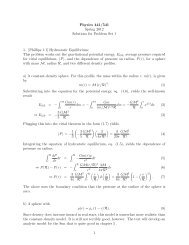MasteringPhysics: Print View with Answers
MasteringPhysics: Print View with Answers
MasteringPhysics: Print View with Answers
You also want an ePaper? Increase the reach of your titles
YUMPU automatically turns print PDFs into web optimized ePapers that Google loves.
Note that Coulomb's Law gives the total force between charges. To find a component, you must first apply Coulomb's Law to find the total<br />
force and then resolve the force. It is incorrect to first resolve the relative position vector and then use Coulomb's Law separately for each<br />
component.<br />
ANSWER:<br />
F x.yellow =<br />
Also accepted:<br />
Hint 3. Find the force due to the red sphere<br />
Find<br />
F x.red , the x component of the force that the red sphere exerts on the blue sphere.<br />
q d 1 q red k 1<br />
Express your answer in terms of , , and the unknown charge . You may use for , where ϵ represents the permittivity of<br />
4πϵ 0<br />
0<br />
free space.<br />
ANSWER:<br />
F x.red =<br />
Also accepted:<br />
ANSWER:<br />
q red =<br />
Visualizing Electric Fields<br />
Description: Select the correct drawing of electric field lines for several situations and answer questions about why other choices are incorrect. Then,<br />
these ideas are demonstrated <strong>with</strong> an applet.<br />
Learning Goal:<br />
To understand the nature of electric fields and how to draw field lines.<br />
Electric field lines are a tool used to visualize electric fields. A field line is drawn beginning at a positive charge and ending at a negative charge. Field lines<br />
may also appear from the edge of a picture or disappear at the edge of the picture. Such lines are said to begin or end at infinity. The field lines are directed<br />
so that the electric field at any point is tangent to the field line at that point.<br />
The figure shows two different ways to visualize an electric field. On the left, vectors are drawn at various points to show the direction and magnitude of the<br />
electric field. On the right, electric field lines depict the same situation. Notice that, as stated above, the electric field lines are drawn such that their tangents<br />
point in the same direction as the electric field vectors on the left. Because of the nature of electric fields, field lines never cross. Also, the vectors shrink as<br />
you move away from the charge, and the electric field lines spread out as you move away from the charge. The spacing between electric field lines<br />
indicates the strength of the electric field, just as the length of vectors indicates the strength of the electric field. The greater the spacing between field lines,<br />
the weaker the electric field. Although the advantage of field lines over field vectors may not be apparent in the case of a single charge, electric field lines<br />
present a much less cluttered and more intuitive picture of more complicated charge arrangements.





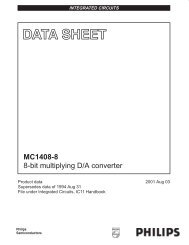

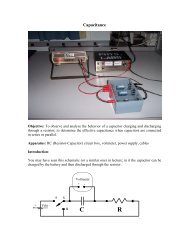

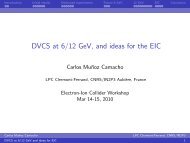
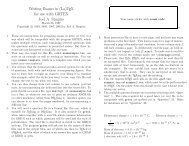
![More Effective C++ [Meyers96]](https://img.yumpu.com/25323611/1/184x260/more-effective-c-meyers96.jpg?quality=85)



